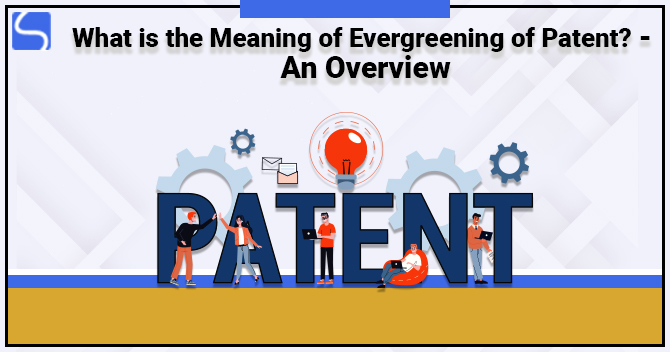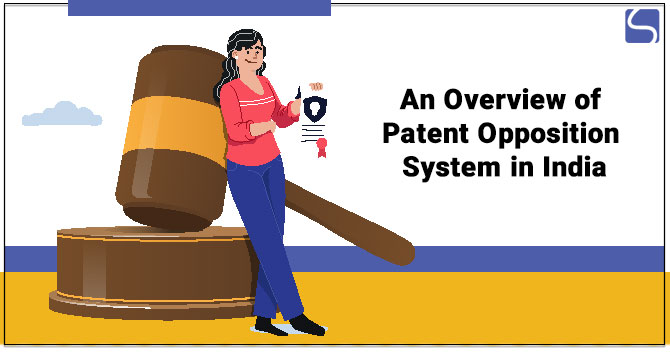What is the Meaning of Evergreening of Patent? – An Overview

Karan Singh | Updated: Mar 20, 2021 | Category: Patent
Evergreening of Patent, as the name proposes, is a business, legal, company, and technological approach for extending the term of a registered Patent in a jurisdiction that is about to expire in order to preserve royalties from them by taking out new patents. A Patent is an exclusive right given to an inventor for a limited time in return for his or her revelation of an invention that is a unique, new and useful product or process.
In India, the validity of a Patent Registration is for a maximum of twenty years (provided it is maintained by paying annual fees). Once the Patent gets expired, the invention goes into the public domain, which is free to use, sell, import, or manufacture. But, sometimes, the owner of a Patent (mostly pharmaceutical companies) attempt to extend this control right beyond the limited time of twenty years. When the Patent term is going to end, these companies make unimportant discrepancies to the existing patented invention and file for a new Patent, thus extending their control; this is known as Evergreening of Patent. In this blog, we are going to discuss the meaning of Evergreening of Patent.
Table of Contents
Let’s Understand the Evergreening of Patent
Generally, evergreening of Patent is not an official theory in the Patent Laws. Rather than this is a social idea or thought that is in use for referring to various ways. In this process, the owner of a Patent uses some regulatory procedures and law for increasing diligent ownership privileges. The evergreening of Patents means earning more benefits for an extensive interval of time. In simple words, the evergreening Patents means that the nonstop extension of Patent rights and it also states the method of receiving many Patents for the same product. These Patents cover different factors of the single product through collecting Patents on better editions of present products.
The evergreening of Patents is a common part of pharmaceutical Patents. The most essential method that international medicine enterprises use is evergreening drug Patent. In 2014, the reports disclosed that international pharmaceutical income is more than one trillion dollars. The United States companies have been using this since 1983 and since 1993 in the states of Canada. The Patents evergreening means are safeguarding wealth from high sales volume for a long period.
Also, Read: Documents Required for Patent Registration in India : Complete Guide
International Agreements, Practices, and Acts
Following are some Global Acts and Agreements that are related to the evergreening of Patents:
- India: India changed its Patent Laws to accept the TRIPs responsibilities in 2005. The Union of India vs Novartis is still one of the milestone decision by the Supreme Court of India. Novartis was a well-recognized drug manufacturing company that applied for Patents in 1977. The Patents to Novartis are not granted because the drug did not accomplish any foremost healing effectiveness. Moreover, it is also related to an already existing form that has Patents outside India. Similarly, before the developments in 2005, pharmaceutical manufacturers don’t have any Patents. But after the alterations, the Patents were given to the pharmaceutical manufacturers.
- Australia: To match up with the global standards, the Government of Australia made a detailed modification in its laws. A new Section 26B has an agreement in the Therapeutic Goods Act, 1989. As per Section 26B, the applicants requires to certify that their product is not invading current patented products. Moreover, the Australian Administration certified anti-evergreening revision in 26C and 26D Sections of the Therapeutic Goods Act, 1989. These modifications are shaped to avoid Patent owners from misrepresenting the Court system for extending their Patents. Moreover, the objective of 26C and 27D is to control Patent owners to get an allowance of their Patents.
- South Korea: This country has an Act called KORUSFTA or Republic of Korea-United States Free Trade Agreement. Article 17.10.4 of AUSFTA has an identical section in article 18.9.4 of KORUSFTA. These provisions are sometimes related to TRIPS-plus indicating. They are an extension to the Patent’s provision of the WTO Multilateral Agreement. Moreover, this agreement is associated with the Trade-Relate Aspects of the IPR Agreements. Some intellectuals like to quote as TRIPS-minus due to their ability.
- The United States of America: In the United States of America, after the approval of the Hatch Waxman Regulation, the idea of evergreening of Patents ascended. In 2002,the Federal Trade Commission prepared an extensive inquiry. Around 75% of the pharmaceutical manufacturers ensnare in action that initiates by the Patent’s owner. Moreover, to control this, the FTC will accept that just one evergreening Patent must be submitted by the company. In the United States of America, the 101, 102, 103 Patent Laws code tells the requirement for Patents.
- Canada: In 1993, Canada reconstructs its network linked to the evergreening of Patents methods because of NAFTA (North American Free Trade Agreement). According to the Canadian NOC Laws, elements that contract with authorizations of compliances and Patents were limited. They have deterrence form approving drug makers for the manufacture of drugs. Furthermore, till every appropriate Patent on the label word product has expired. After NAFTA suggested limitations, whenever a drug manufacturing fills an application for a new product. Then it again delivers an NOA (Notice of Allegation) stating that none of their Patent has been violated.
Conclusion
The procedure for evergreening of Patents comprise aspects of International Trade Law and Patent Law. The process of evergreening is never earned any legal attention; it does not mean that this is not spread in many countries of the world. Moreover, if you want to more for your company’s location, then you can call an expert who will guide and tell all the details regarding the same.
Also, Read: A Complete Guide on Patent Renewal Process in India














